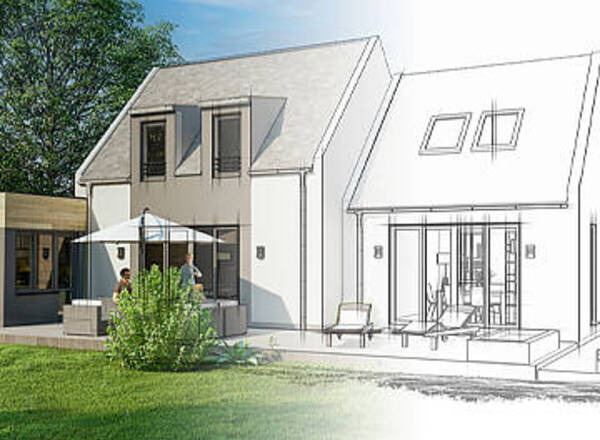
Sometimes, for example, when you are going to sell your house, it may be the case that it does not appear in the Land Registry as it really is. It could be that extensions that have been carried out are not registered in the land registry. Or another example would be when you go to the Land Registry to get information about the deeds of your property and the reality does not match the description, an inherited house that in the deeds only shows the plot but not the building... If this is your case we explain you how you can proceed to correctly register an existing building, an extension or other elements in the Land Registry. The procedure that regularizes it is the DECLARATION OF AN OLD BUILDING.
If you want to know more about how to regularise a dwelling, house, villa or extension, read on.
Not always, and it is more common than we might think, the physical reality of our property, i.e. what we perceive, what we live in, what exists physically is not what is legally registered in the Land Registry. That is to say, it differs from the registered reality, which is the information relating to the property that is recorded in the Land Registry.
This may be the result of an undeclared extension, buildings out of order, constructions pre-existing the planning, or it may not even be registered for reasons other than purely urbanistic ones, such as avoiding paying higher taxes or simply ignorance of the regulations.
This does not mean that we cannot adapt the registry reality to what physically exists, and this is done by means of REGISTRAR DECLARATION.
There are two options for declaring these buildings or constructions:
We usually call it Legalisation when the construction is less than 10 years old and therefore we have to apply for a Licence from the Town Hall.
If the house has been built for more than 10 years , we can proceed to regularise it due to its age. This case is simpler, cheaper, quicker and easier.
Deed a dwelling and register it in the Land Registry in order to make its existence and age public and reliable, thus giving us recognised rights over the property.
In order for a building - dwelling or other construction - to meet the requirements for its Regularisation it must have the following characteristics:
If a house or dwelling is 10 years old or more, we can proceed to its regularisation in a quick, simple and economical way.
The DECLARATION OF AN OLD BUILDING procedure must be carried out by NOTARIAL PUBLIC DEED, i.e. a Notary Public will be responsible for issuing the declaration and then requesting its registration in the Register. To do this, the Notary must have the following documentation relating to the property:
A building must meet a series of requirements, including the fact that the planning offence is time-barred so that the Public Administration cannot act against it. In this case, the building could be registered in the Land Registry and in this way it would be regularised.
Before REGULATING any action carried out without a licence, we recommend that you seek the advice of a competent technician. Regularising a property is a simple process in almost all cases, but it is not always possible.
TECHNICAL ADVICE (PREVIOUS)
Either through a trusted technician or from your local council, you will need to resolve some preliminary questions to find out if the regularisation is viable and how to go about it.
TECHNICAL DOCUMENTATION (DRAFTING)
In order to apply for the regularisation of your home or extension you will need a series of technical documents
DECLARATION OF NEW CONSTRUCTION (NOTARY)
A notary will be in charge of issuing the declaration by means of a public deed and then requesting its inscription in the Land Registry.
REGISTRATION IN THE LAND REGISTRY (LAST STEP)
This is the last step. The property will be registered in the Register as stated in the notarial deed.
The most obvious advantage of regularising a property is a considerable increase in value for the regularised property.
This is accompanied by another series of benefits such as being able to mortgage the entire property, to sell it, to inherit a property without problems...
REVALUE YOUR PROPERTY - The valuation will reflect the full value of the property. Sometimes it can double the value of the property or even more.
LEGALICE YOUR PROPERTY - Obtaining property security and the possibility of taking out a mortgage loan using your property as collateral.
SELL YOUR HOME - It will be easier to sell it. By obtaining the 1st occupancy you give the guarantee for third parties who acquire your property.